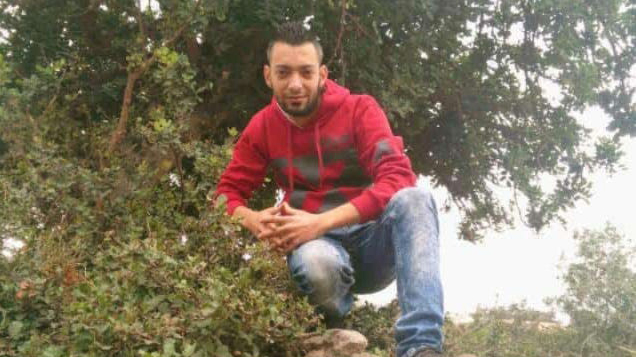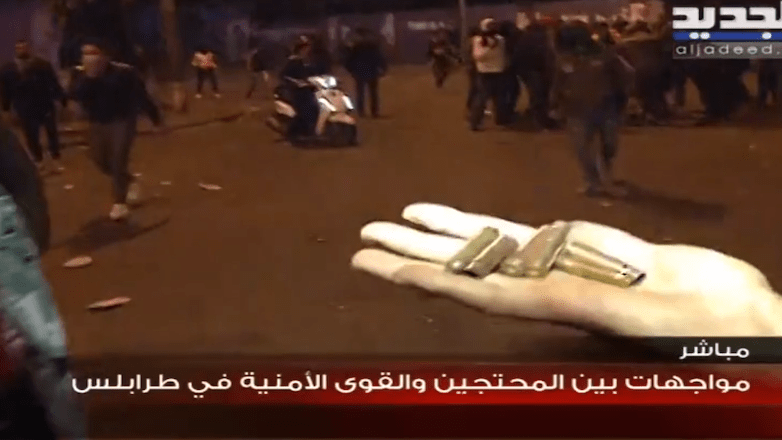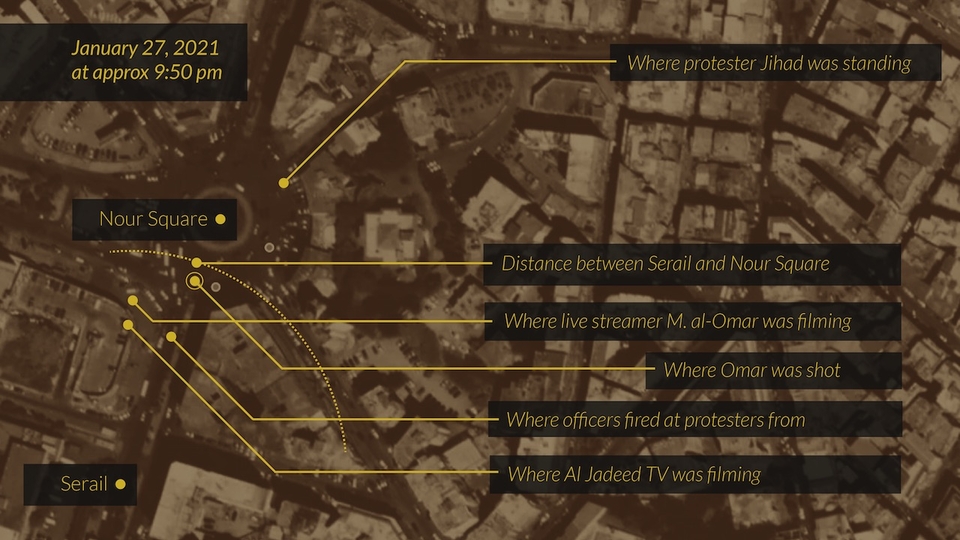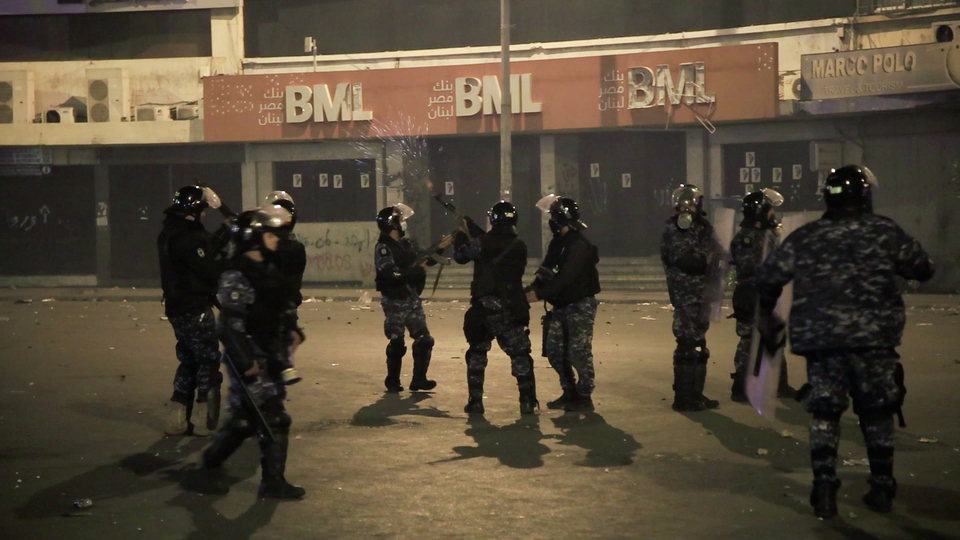The Killing of Omar Tayba: A Visual Investigation of a Protester’s Death in Tripoli
BEIRUT, Lebanon—Omar Tayba spent the last day of his life delivering pastries from a bakery, earning LL15,000 (about $1.70) for a six-hour shift. After finishing work at about 2 p.m. on Wednesday, January 27, the 29-year-old headed back to his home in Bab al-Tabbaneh, in Lebanon’s northern city of Tripoli, where he lived with his parents and younger sister. “Aside from work, it had been a while since he got out of the house,” said his older brother Ahmad Tayba, who lives in the same building.
Living conditions in Tripoli were dire even before the country’s financial collapse and the coronavirus crisis. But on January 15, after hospitals neared full capacity, the Lebanese government imposed a strict coronavirus lockdown that made life even harder in Lebanon’s second-largest city. On January 27, protests broke out at the Serail, Tripoli’s municipal government compound, over the lockdown and its impact. When Omar saw the protests on television, he decided to go and watch.
Ahmad bumped into Omar as they both left home at 6:50 p.m. that evening. Ahmad was heading to work; Omar said he was heading to Nour Square, not far from the Serail, to watch the protests.
“I told him not to go because of the dangerous situation,” said Ahmad, a bus driver who was working for a taxi company during the lockdown. “But he told me he will watch from afar, just for a change of scenery.”

Omar Tayba in an undated photo. (Courtesy of Ahmad Tayba)
Within a few short hours, Omar Tayba would be fatally shot — killed by his own government for attending a protest against the desperate living conditions that have crippled the country. Lebanon’s Internal Security Forces (ISF) issued a statement about the events of that night, claiming that its officers feared for their lives and had no choice but to use live ammunition on protesters who lobbed rocks, Molotov cocktails and, they claimed, even grenades at them.
“Some [protesters] insisted on attacking [security] forces, and at the same time, several unknown-source shots were fired from outside the Serail,” the statement read. “The security forces regretted the riots, assaults, and criminal acts that resulted in the death and injuries among the citizens and the injury of 41 officers.”
But the story of Omar Tayba suggests that ISF officers used deadly force indiscriminately against protesters who — contrary to the official narrative — posed little or no threat to the officers' lives. The Public Source, by closely examining television and Facebook Live footage, and conducting interviews with hospital staff and six eyewitnesses, has reconstructed Omar Tayba’s final hours. Our investigation found that Omar was shot in the back, most likely while trying to run away, in a public square where ISF officers appear to have faced nothing more deadly than rocks.
“They were all young guys,” said Ahmad. “Yes, they were throwing rocks, but it was wrong to fire live ammunition at people.”
Lebanon’s ongoing economic crisis, which began in late 2019, has plunged roughly half the population into poverty. Anti-government protests erupted across the country in October 2019 and have continued on and off until the present day. At the height of the uprising, thousands of protesters gathered daily in Tripoli’s Nour Square. Tripoli’s latest wave of protests kicked off in late January, escalating in the evening when Omar was killed.
Although Omar sympathized with the protesters, his family said he wasn’t politically active. “He’s not involved in politics and protests and these things,” his brother Ahmad said. But, like much of Lebanon, he had been struggling to make ends meet because of a spiraling economy and lack of job opportunities.
That evening, Omar and his two cousins, Imad Tayba and Wissam Khodor, decided to watch the protests from the sidelines in Nour Square over a cup of coffee. When they arrived at the square, the clashes were at the Serail, about 100 meters away from where they stood. According to social media posts from the scene, protesters had been trying to break into the Serail compound since that afternoon. Some had apparently made it to the parking lot, where they hurled rocks, firecrackers and Molotov cocktails. The ISF claimed that some lobbed hand grenades, posting a picture of an unexploded grenade on Twitter. Security forces fired warning shots to try to disperse protesters, according to a viral Facebook livestream that The Public Source obtained before it was taken down.
Back in Nour Square, Omar and his cousins heard the commotion coming from the Serail. “When we heard an explosion, we said, ‘Okay, things are getting bad,’” Khodor said. “But Omar wanted to stay for another 10 or 15 minutes. So we reluctantly said okay.”
Because of the economic crisis, more people were protesting than usual, said one eyewitness, but the situation didn’t seem particularly dangerous at first. “The exchange was something that you would see in any other protest,” said Jihad, a protester who was standing on the other side of Nour Square from Omar and his cousins. “Some people were watching what was happening... They stood on the corners [of the square] and drank coffee.”
When the ISF began firing teargas into the crowd, the protesters at the Serail headed back to Nour Square. Omar, Khodor and Imad found themselves in the middle of confrontations between protesters and security forces. Protesters threw rocks while security forces tried to clear the square with tear gas. “All the clashes were happening in front of the Serail while we had coffee in Nour Square,” Imad said. “But suddenly everyone ended up here.”
Meanwhile, Ahmad was driving home from work when he heard the sound of a distant gunshot. Concerned about his brother, he called Omar at about 8:30 p.m. “He told me he was in Nour Square and far from where the gunshot came from,” he recalled. “So I told him to just be careful and to take care.”
Just over an hour later, at around 9:50 p.m., security forces fired at protesters in Nour Square, according to video footage from local television station Al Jadeed.
The Al Jadeed footage shows riot police with helmets and shields retreating in formation back towards the Serail as a crowd of protesters hurls rocks at them. An officer in the front of the formation takes out a handgun and tries to disperse the crowd by firing warning shots diagonally over their heads. At this point, many of the protesters appear to run away, most of them back to the middle of Nour Square. As dozens of protesters continue to throw rocks, the officer starts shooting at the ground between them a few meters away, sending bullets ricocheting into the air. Finally, his arms shaking, he aims directly into the crowd. In the Facebook livestream video, the videographer screams: “Oh my God! They’re shooting directly at protesters!”
By now most of the rock-throwing protesters are scrambling away. But another officer breaks out of the group and continues firing at them with an AK-47 assault rifle. By the time officers stop shooting, two protesters are laying on the pavement near a white tent in the middle of Nour Square, about 50 meters away from the officers. One of them appears to be motionless. Neither of the two appear to have been anywhere near the officers when they were shot. One video, posted on the Facebook page Lebanon News, shows the two protesters falling to the ground after being shot. In the Al Jadeed footage, an outraged protester grabs a handful of bullet cartridge cases from the pavement and shows it to the television crew. The Omega Research Foundation, a UK-based independent research organization, told The Public Source those cartridge cases resemble those of an AK-47 rifle.

Screenshot of a handful of bullet cartridges shown on Al Jadeed TV's live broadcast moments after riot police fired and wounded protesters in Nour Square. Tripoli, Lebanon. January 27, 2021.
The Public Source has found no evidence that protesters used grenades, Molotov cocktails or any weapons in Nour Square. The four videos all show that the security forces shot at least two protesters in the square, although eyewitnesses said more than two protesters were wounded by gunshots.
“It’s horrifying to see the security forces shooting at protesters like that,” the Facebook Live videographer, Mohammad al-Omar, told The Public Source. He added that he never witnessed live shooting in protests in Beirut or other Lebanese cities — only in Tripoli. “They [the security forces] only flex their muscles when they deal with us.”
"It’s horrifying to see the security forces shooting at protesters like that." —Mohammad al-Omar, videographer
At this point, protesters ran toward the wounded and carried them to ambulances that were waiting nearby. One protester, Omar al-Abiad, remembered tending to at least six of the wounded while waiting for more ambulances to arrive. “It felt like a blur,” he recalled. “I’d be putting pressure on one guy’s wound, and then packing another guy’s wound. It was insane.”
Meanwhile, Khodor was desperately trying to find his cousins in the chaos. Moments after the ISF stopped shooting, he was horrified to find Imad trying to pick Omar up off the ground, shouting: “Omar got shot! Omar got shot!”
Based on footage from multiple sources, and interviews with eyewitnesses, it appears that Omar was one of the two protesters who fell to the ground near the white tent in the middle of the square. His cousins believe he was trying to make his way out of the square when he was shot. Omar’s exact location could not be independently verified, but Imad confirmed that the wounded protester being carried away from the tent in the Facebook Live video is his cousin. “That’s me and someone else carrying Omar,” he said, sharing a screenshot over WhatsApp.
Al-Abiad also remembers finding Omar by the white tent. By that time, Omar was already in critical condition. “He was already fading and losing consciousness,” said al-Abiad. “It looked like the bullet came out of the lower part of his stomach.”

Map of Nour Square, at approximately 9:50 p.m. on the evening of January 27, when security forces fired live ammunition at protesters, showing locations of officers, television crew, a live streamer, and where eyewitnesses believe Omar was shot.
Imad jumped into the ambulance with Omar and another wounded protester who was shot in the foot. Khodor followed. They arrived at Nini Hospital a little after 10 p.m. After about half an hour, doctors began to operate on Omar. The doctors worked on him until about two in the morning — almost four hours. “The doctor said he had a one percent chance of making it,” Khodor said with a deep sigh. “And he didn’t make it.”
Hospital officials confirmed that Tayba was shot in the lower back, with the bullet escaping through his abdomen. They told The Public Source that Tayba was already in critical condition by the time he arrived at the hospital. The hospital officially informed Omar’s family of his death the following morning. “We were officially notified of Omar’s passing at 8 a.m.,” Ahmad said. “But someone from the hospital told us he passed away overnight, and another told us at dawn.”
Later that morning, an intelligence official approached Ahmad and his father Farouk in the waiting room at the hospital. He asked them what Omar was doing at the protest, then offered his condolences and said the incident would be investigated. The hospital administration said they shared Tayba’s medical file with the ISF for their investigation.
“He was a young man, and you know how the situation is here for them. He felt he had no future here.” —Ahmad, Omar’s brother
Omar Tayba is the third person to be killed by security agencies at protests in Tripoli since the start of Lebanon’s popular uprising in October 2019. On October 27, 2019, Ahmad Tawfik was hit in the stomach by a stray bullet at a protest. He succumbed to his wounds on February 17, 2020. Protesters and media outlets lodged accusations against the army, the ISF and former Tripoli MP Mesbah el-Ahdab’s bodyguards. And on April 27, 2020, the Lebanese army shot 26-year-old Fawaz al-Samman during a protest at Nour Square. Al-Samman died the following morning. The army “expressed its deep regret” over the incident and pledged to investigate. To date, neither Tawfik's nor al-Samman's killers have faced any accountability. In an email correspondence with the Lebanese army's press officer, inquiring specifically about al-Samman and Tayba's deaths, the spokesperson only relayed to The Public Source that the investigations are ongoing and "within the jurisdiction of the judiciary." The ISF did not respond to a request for comment.
The Tayba family is skeptical whether they will ever see justice for Omar. The ISF told Farouk Tayba, Omar’s father, that the investigation is ongoing. But when Farouk tried to follow up, an ISF colonel told him that he should have brought in a coroner to examine Omar’s body. “When we retrieved the body at the hospital, we never were informed about the need to bring in a coroner and so on,” said Ahmad. “We weren’t aware of these things. My father had to find out himself who was handling the investigation.”
The family has since brought in lawyers to pursue Omar’s case. “We want justice for Omar, but not only for him. He’s gone, and he’s not coming back,” said Ahmad. “We don’t want other families to taste the misery we have.”
His voice shook as he held back tears. “He was loved,” said Ahmad. “Everyone loved him. He was a young man, and you know how the situation is here for them. He felt he had no future here.”
